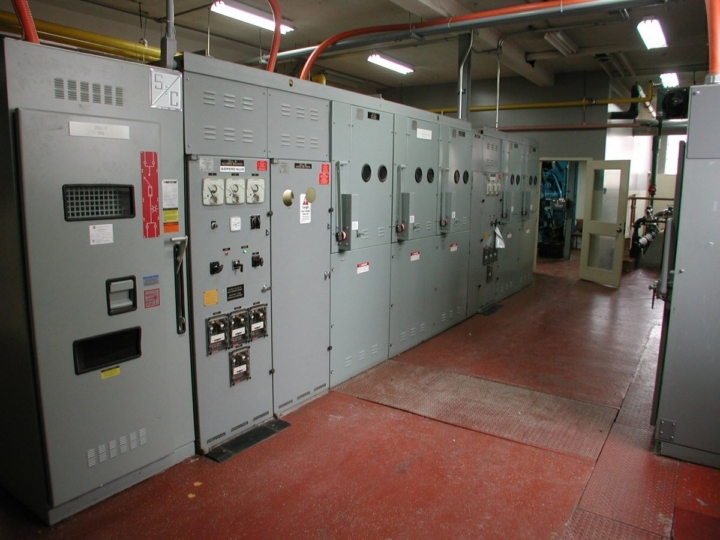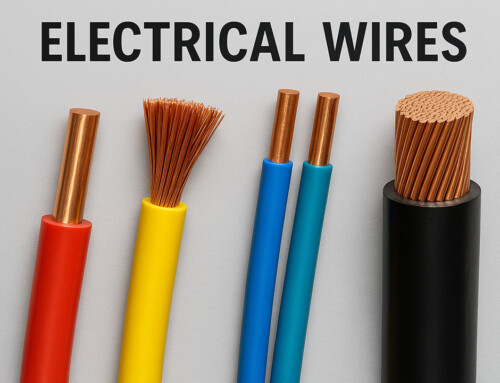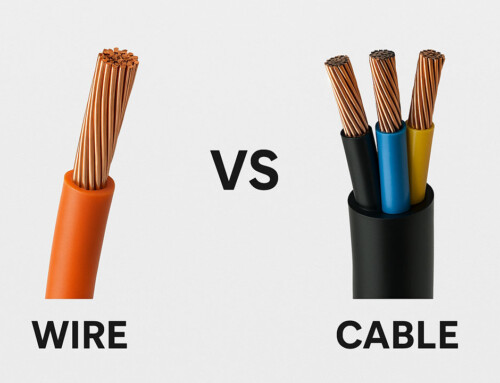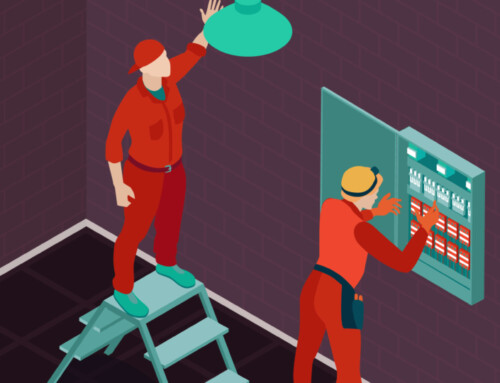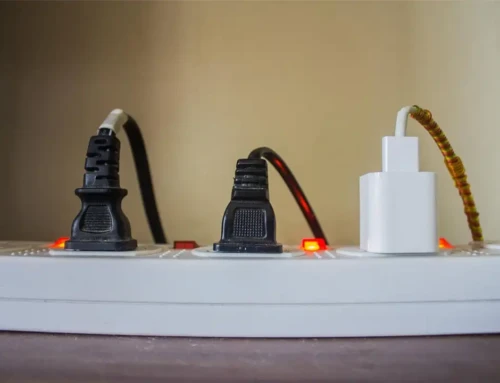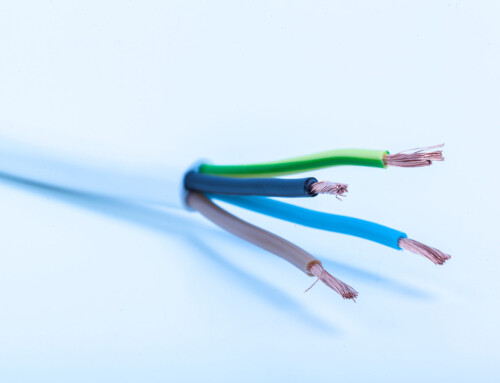Table of Contents
Switchgear refers to an amalgamation of electrical switching devices whose function is to switch, control, meter, regulate, isolate, and protect electrical circuits and equipment. Some of the products encompassed within the switchgear include switches, circuit breakers, switch fuse units, contractors, H.R.C. fuses, offload isolators, and earth leakage circuit breakers (E.L.C. Bs). These devices are assembled in a logical manner to form the switchgear. The switchgear may be used to clear faults downstream as well as de-energize equipment so that work can be done. This equipment has direct linkage reliability of the supply of electricity.
Components of Switchgear
Switchgear comprises protecting and switching devices that include fuses, switches, circuit breakers, isolators, control panels, relays, current transformers, potential transformers, control panels, and other associated equipment.
Some of the equipment is designed to operate under abnormal and normal conditions. Some of the equipment is also designed only to serve the role of switching; hence cannot sense faults. Switchgear facilitates switching generators, distributors, transmission lines as well as other electrical equipment on or off.
In the event of failure on any part of the system such as a short circuit, heavy current flows through the equipment, thus posing a potential threat to the equipment as well as causing interruption of service. When this happens, the switchgear will detect the existing fault before disconnecting the unhealthy section from the rest of the system.
Evolution of the Switchgear
The switchgear is mainly used to interrupt and switch currents under abnormal or normal operating conditions. The simplest form of switchgear that you can find is the tumbler switch that is not only used in controlling and protecting lights but other equipment in the office or at home as well. In the case of circuits that have a higher rating, a high rupturing capacity (H.R.C.) fuse and a switch may be used to protect and control the circuit. Even then, switchgear may not be profitable in high voltage systems of up to 33kV because of two reasons:
- The fuse cannot interrupt large fault currents resulting from faults within the system successfully.
- If the fuse blows, replacement may take a longer time resulting in interruption of service to consumers.
In advanced power systems, the equipment and lines carry high current and operate at high voltage; thus, the occurrence of a short circuit can lead to massive damage. As such, the heavy currents are interrupted by heavy fault currents.
Essential Features of Switch
Here are some of the critical features of switchgear:
- Complete reliability – Continued interconnection as well as an increase in the capacity of the generating stations call for installation of reliable switchgear. The inclusion of switchgear is paramount to improving reliability. Thus, when there is a fault in the power system, the switchgear must work on segregating the section that is faulty from the rest of the circuit.
- Quick operation – When faults occur on any section of the power system, the switchgear must operate quickly to prevent damage by short-circuit currents to the transformers, generators as well as other equipment. When a fault is not cleared quickly, it can spread to other healthy areas, thereby endangering the systems to a complete shutdown.
- Provision for manual control –Reliable switchgear needs to have provision for manual control whereby the important operation can be executed via manual control whenever there is a failure in electrical controls.
- Absolutely certain discrimination – Whenever there is fault on any part of the power system, the switchgear should be able to differentiate between the healthy section and the faulty section. Consequently, it should be able to segregate the faulty section from the system without having an effect on the healthy section to ensure the continuity of power supply.
Classification of Switchgear
Switchgears are classified according to the voltage level. Thus, there are three main categories of switchgear as follows:
- High voltage (H.V.) switchgear
- Medium voltage (MV) switchgear
- Low voltage (LV) switchgear
Switchgear and Protection
Fuses that can be rewired and low voltage switches are used to close and open the electrical circuit manually in the home where the electrical fuse protects the household’s electrical circuit from short circuit faults as well as over current.
Consequently, electrical circuits that include high voltage electrical power systems require protective devices and switching. However, in extra-high-voltage and high voltage systems, the protective and switching schemes can get too complicated for the high fault current interruption securely and safely.
Additionally, from a commercial viewpoint, electrical power systems require measuring, regulating, and control arrangement. This entire system is collectively referred to as the switchgear and protection of the power system. Thus, electrical switchgear has developed in various forms.
Switchgear protection plays an essential role within the modern network of the power system from generation to transmission and distribution. The device that is used to switch or interrupt the flow of current in the switchgear protection system is referred to as a circuit breaker that may also be operated manually. The circuit breaker senses faulty conditions in the system through protection relay where the relay is actuated by a faulty signal from the voltage transformer or current transformer.
Apart from the power system network, switchgear may also be required in industrial projects, industrial works, commercial and domestic buildings.
LV Switchgear
Low voltage switchgear refers to electrical switchgear that is rated to 1kv. Thus, the term LV switchgear collectively refers to H.R.C. fuses, low voltage circuit breakers, offload electrical isolators, switches, earth leakage circuit breakers, molded case circuit breakers (MCCB) and miniature circuit breakers (M.C.B.). That is, all accessories that are required in protecting the LV system. The LV switchgear is mainly used in the LV distribution board. The system is made up of the following parts:
- Incomer
- Sub-incomer
- Feeders
The Basic Functions of LV Switchgear
The role of the LV switchgear includes the following:
- Electrical protection – This guarantees protection of the elements of the circuit against mechanical and thermal stress. It also offers protection of persons in case of insulation failure. It protects appliances as well as apparatus that are being supplied with electricity.
- Isolation of parts of installation – This aims to de-link the circuit apparatus from the rest of the system that is energized to allow the isolated part to be worked on while ensuring safety.
- Remote or local switching – Switchgear control function gives room for modification of a loaded system by the operating system personnel according to the laid down requirements. It includes functional control, maintenance operations on the power system, and emergency switching.
Working of LV Switchgear
How to inspect, test and measure LV switchgear
Here are some general inspection and maintenance timelines for low voltage switchgear:
- General inspection should be done annually, paying attention to all the components
- Motor and starter feeders (outgoing), incomers, and windings should be inspected every four years
- Voltmeter correctness should be inspected every four years
- Inspection of compartments of busbars should be done every eight years
- Ammeter correctness should be done every four years
- Outdoor equipment conditional assessment should be done every two years
For testing and maintenance of low voltage switchgear, the following timelines must be observed:
- Feeders (incoming, switches, busbars)
The operating systems, controlling equipment, interlocks, and protection equipment need to be tested every four years. - Busbar systems
Insulation resistance, bolts for torque resistance, and ductors should be tested every eight years - Feeders for the motor
- Cable tightness and draw out interlocks – every four years
- Earth fault and thermal fault protection – every four years
- Thermal protection of category ‘e’ – every 3 years
- Restarting – every four years
- Insulation resistance – every four years
- Feeders (Plain)
- Tripping – every four years
- R.C.D. on fixed load (to look out for overheating) – every four years
- Draw out interlock, cable tightness – every four years
MV Switchgear
A switchgear system that is capable of handling between 3kv and 36kv is referred to as medium voltage switchgear. These come in many types, such as metal-enclosed outdoor type, metal-enclosed indoor type, as well as an outdoor type without metal enclosure, among others.
The mode of interruption of this switchgear can be S.F., oil, and vacuum with the main requirement of the medium power network being interrupting current whenever there is a fault condition regardless of the type of C.B. that is used by the MV switchgear system.
The Functions of MV Switchgear
Medium voltage switchgear should be able to perform the following functions:
- Short circuit current interruption
- Switching capacitive currents
- Switching the inductive currents
- Performing normal ON/OFF switching
- Other special applications
Ultimately, all the functions mentioned must be undertaken with a high degree of reliability and safety.
Working of MV Switchgear
How to inspect, test and measure MV switchgear
Different components that make up the MV switchgear need to be inspected as part of the routine maintenance. Usually, the inspection and maintenance take place after a defined period as follows:
- General inspection – All components need to be checked annually
- Compartments of busbars – Every eight years
- Internal cable boxes, internal fuse contractors, internal C.B.’s – Every four years
- The correctness of voltmeter – Every four years
- The correctness of the ammeter – Every four years
- Other measuring systems – After four years
Testing and Maintenance
In terms of testing and maintenance, the acceptable durations after which the system should be subjected to testing and maintenance is as follows:
- Ductor test – Four years
- Dielectric strength – Eight years
- Distance between the contacts (SF6, vacuum) – Four years
- Category ‘e’ thermal protection – Three years
- Dielectric oil test – Four years
- Restarting – Four years
- Insulation resistance – Four years
Busbar Systems
- Checking correctness of Kvar, kW and measuring the maximum demands of the system – Four years
- Insulation resistance, torque resistance, doctors and dielectric strength – Eight years
Restoration
- Replacement, oil filtering as well as replacing components – When the need arises
- Greasing all the components of the equipment – Four years
Importance of Routine Checks and Regular Maintenance of Switchgear
When switchgear is installed in an environment that is air-conditioned, well ventilated, and clean, it does not need much maintenance. However, significant inspections are necessary when the plant is shut down. Inspections usually include:-
- Checking interlock operations
- Identifying contact wear
- Observing the overload settings
- Checking the size of fuses used
- Looking out for possible overheating
- Checking for the presence of corrosion or dirt on the components of the switchgear.
A lot of concentration must go into checking protective devices, contact distances of the vacuum bottles, and the oil levels within the circuit breaker to ensure that they are all in line with the specifications of the manufacturer.
Even then, exemptions may be given to the switchgear that operate frequently and whose maintenance is dependent on the overall hours of operation. Additionally, care must be taken to ensure that the MV switchgear insulation and the contractual circuits are in place. The gas-insulated switchgear is another exemption that should be maintained according to the specifications of the manufacturer. Consequently, extensive maintenance should be supervised by the manufacturer. If the switchgear is aged, conditional assessment needs to be done to determine if the devices can operate further.
Where LV/MV switchgear applications are used
Switchgears may be used in different areas that include the following:
- Industrial power distribution in factories and plants where attention must be paid for overload and surge protection. The switchgear help in ensuring organized and better power distribution in machines within the industrial unit.
- Solar power generation where regulation of surge and voltage is mandatory as it regulates the flow of electric current from the main unit.
- Power stations – Main and sub-power distribution units that need protection for the varied electrical connections.
- Residential power distribution – Switchgears may be installed in residential complexes or places where there is a combination of metal-enclosed and metal-clad switchgear.
Overall, electric energy is a vital part of life. Therefore, electricity distribution must be done in a manner that is secure and safe. Security levels can be maintained at the different distribution units as well as substations through the installation of safety mechanisms and devices. Although numerous mechanisms can help safeguard electrical connections in industrial and residential areas, the use of switchgear is recommended because of its features and functions.

